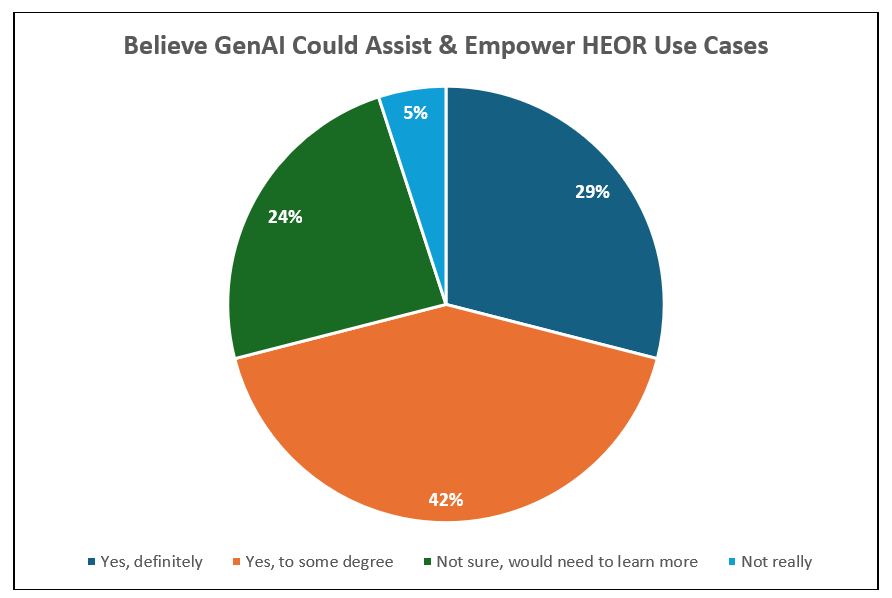Considering GenAI for Systematic Literature Review
At the ISPOR 2024 Conference in Atlanta, attending health economics and outcomes research (HEOR) professionals lamented the drudgery of systematic literature reviews (SLRs) as they envisioned the potential for generative artificial intelligence (GenAI) to fix it. With a single SLR estimated to take anywhere from six to 16 months to complete and cost an average $140,000+ to pharmaceutical manufacturers, it’s no wonder medical writers, researchers, and life science executives are looking for a better way.
Conference attendees showed strong interest in automation, specifically for the SLR process. Nearly a dozen packed sessions focused on AI-related topics in HEOR, market access, and real-world evidence (RWE), surveying audiences on their awareness, openness, and questions about GenAI and its potential impact on literature review and HEOR demands.
Belief in GenAI for HEOR
When asked if they believed that AI, particularly GenAI, could assist and empower HEOR use cases, 71% of respondents reported that they did believe it. With 29% saying, yes, they definitely believed it could assist and empower HEOR use cases, and a further 42% claiming, yes, to some degree they believed it could. Though one in four (24%) were not sure that GenAI could support HEOR use cases and would need to learn more, only 5% did not believe it could provide such help for HEOR professionals.

Featured in The Future of Data-Driven HEOR Decision-Making Powered by Generative AI: How Soon is Now?
Monday, May 6, 2024, at ISPOR 2024 Conference.
Experience with GenAI or LLMs in HEOR
Respondents were also asked about their experience with GenAI and large language models (LLMs) in specific HEOR use cases. Though a plurality (43%) reported no experience with GenAI or LLMs in HEOR work, 29% noted they had utilized GenAI or LLMs for some aspects of SLR or targeted literature review (TLR) work. Economic modeling was the next top use case, with 10% of respondent sharing that they had leveraged GenAI or LLMs for it. While 8% said they had used GenAI or LLMs for data for RWE studies. Six percent of respondents had experience using the solutions with clinical trial design and operations. And 4% used GenAI or LLMs for health technology assessments (HTAs) and regulatory submissions.
Vision for GenAI
In an effort of assess HEOR professionals’ vision for GenAI in their space, attendees were asked for which function they could see GenAI being commonly used. Nearly half (46%), could see GenAI becoming commonly used in HEOR work supporting evidence generation and health economics modeling. Value communications was also a popular potential GenAI common use, with 30% noting value communications, such as creating adaptive value dossiers and communication tools. Fourteen percent envisioned market access, analyzing HTA and reimbursement trends and simulating future product positioning. Finally, 9% thought pricing strategies, as in simulating pricing models and their market impacts, might be a way GenAI would be commonly used to support HEOR work.
Multiple ISPOR sessions featuring GenAI in HEOR revealed the interest and demand from researchers, as well as the potential impact GenAI could have on the literature review process. Though hype is often associated with GenAI and the excitement it triggers, the dialogue at ISPOR and eagerness of HEOR professionals to find new practical approaches for literature review that are possible today was both earnest and inspiring. Their hunger for solutions and openness to GenAI are the galvanizing forces driving these innovations to market. The evolution of this space is one to watch over the coming months.

